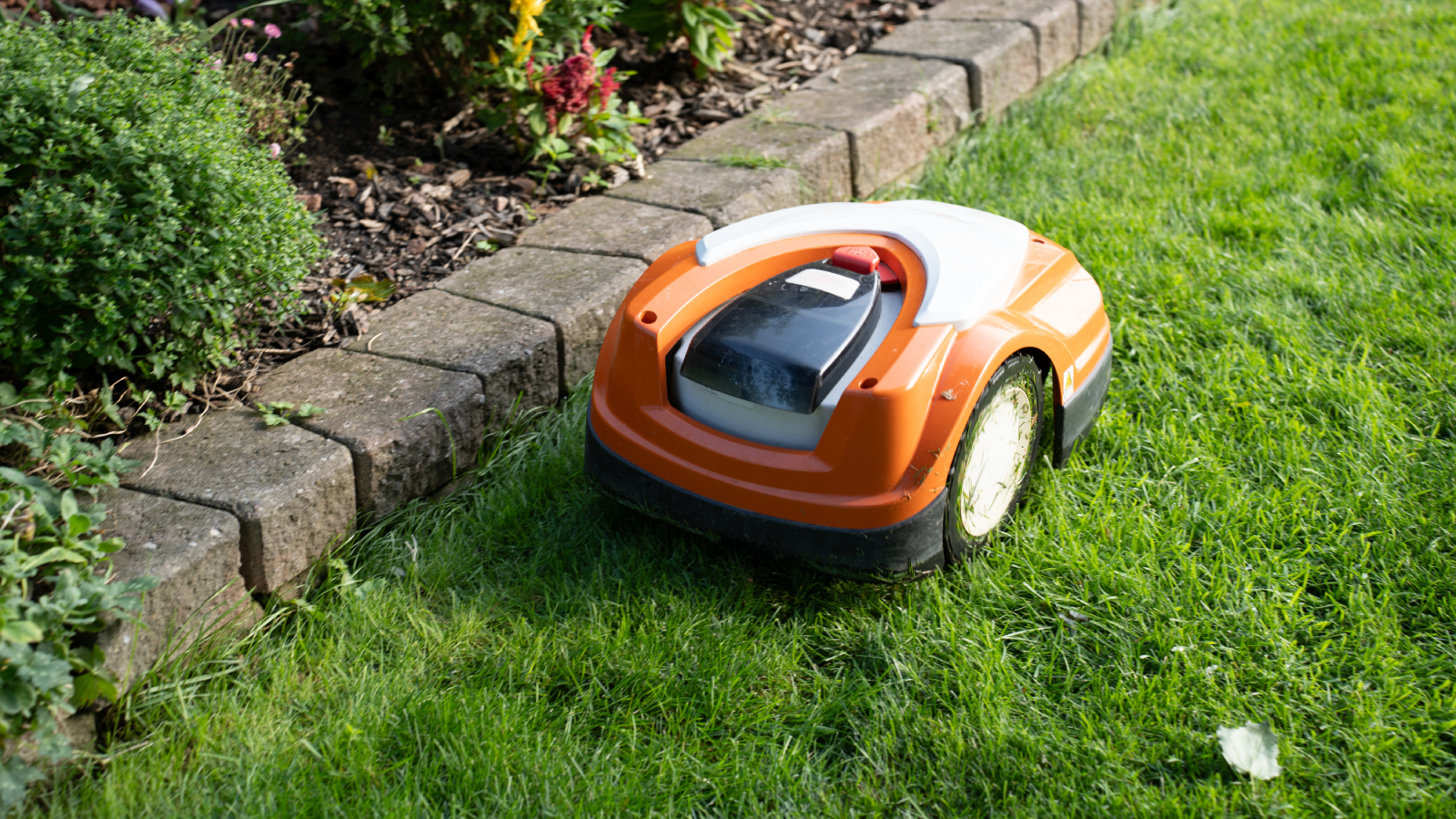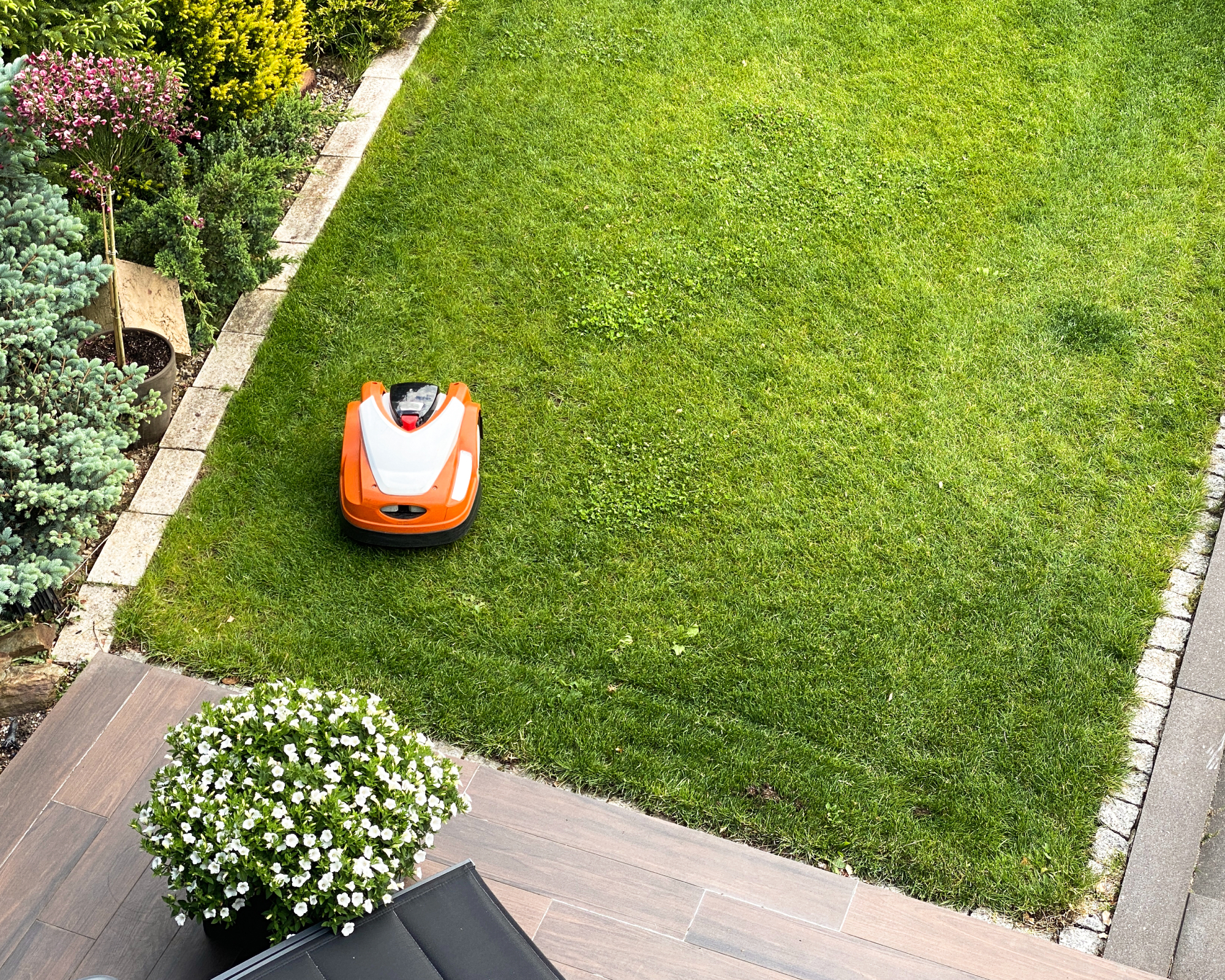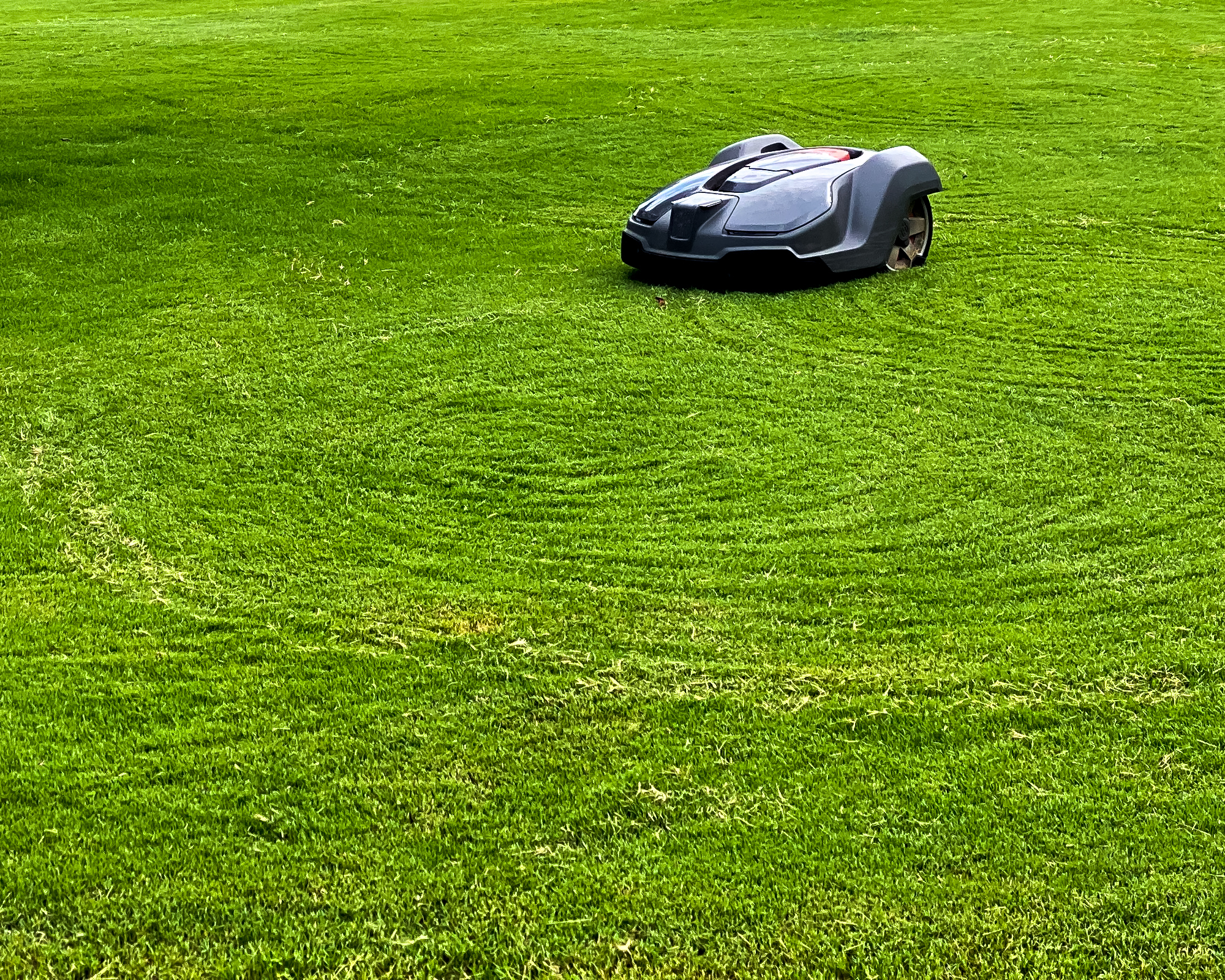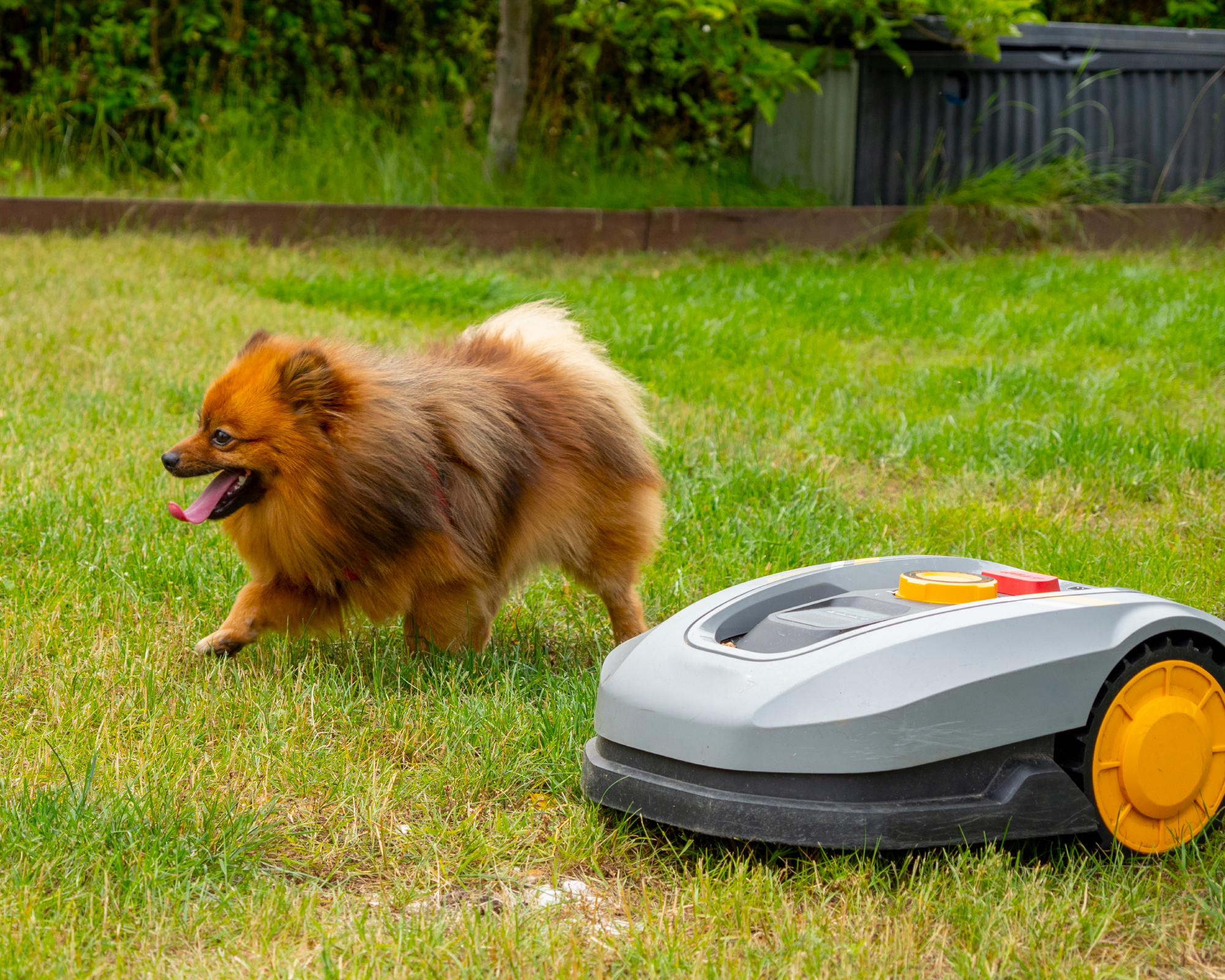Stop Wasting Your Weekends Cutting the Grass, Let a Robot Lawn Mower Do It for You – Here's Everything You Need to Know Before Buying
Tired of cutting grass all summer? It may be time to invest in a robot lawn mower. Learn the about the basics, pros and cons, and top models before buying.


Bonnie L. Grant
A robot lawn mower feels like it rolled out of a sci-fi movie flick, but these nifty gadgets are real and ready to spruce up your yard. They buzz around, snipping grass while you chill or knock out other chores. Perfect for anyone who dreads wrestling a heavy mower, they promise a tidy lawn with little effort.
Smart lawn mowers fit among the various types of lawn mowers, offering a high-tech twist compared to mowing the lawn with gas-powered or manual push clunkers. With GPS or app controls, they’re a tech lover’s dream, but the price can sting. Knowing their strengths and weaknesses first will help you decide if they'll suit your yard—and whether they're worth the investment.
Robot lawn mowers can spare you hours of sweaty mowing, but there are some quirks you should know about when gardening with technology like this. Let’s unpack how they run, their upsides, and their hiccups to see if smart mower is the right fit for you.
What Is a Robot Lawn Mower?
A robot lawn mower is a battery-powered device that can cut grass on its own without you manually controlling it. Think, a Roomba for your yard. It roams, trims, and docks to recharge when done. Equipped with sensors or GPS, robot mowers dodge obstacles like trees or toys.
Most are designed for small to medium yards, but some are able to handle up to an acre. Quiet and electric, these high-tech tools are eco-friendly and ideal for lawn care in smaller suburban yard. They're a futuristic way to reduce lawn maintenance and save you effort.

Benefits of Robot Lawn Mowers
A smart lawn mower saves time. Set a schedule, and some models will keep your lawn neat while you’re busy or away. No more weekend mowing sessions.
They’re eco-friendly, running on batteries with no fumes or loud noise, often quieter than a your normal speaking voice. These mowers mulch grass clippings to feed the soil as they cut.
Sign up for the Gardening Know How newsletter today and receive a free copy of our e-book "How to Grow Delicious Tomatoes".
Apps let you tweak settings like cutting height or no-go zones. Some models can handle rain and GPS-guided mowers can cut crisp patterns.

Drawbacks & Limitations
Robot lawn mowers may take the work out of mowing, giving you more leisure time. However, they do have some downsides.
Robot lawn mowers are not quite as effective as man-powered mowers. If you want a well-manicured lawn with nice, straight mowing stripes, this machine isn't for you. If you don't mind the random pattern robot mowers use to cut the grass as well as doing a little tidying up with a string trimmer afterwards, this may be a good choice.
The other major downside is how much robot lawn mowers cost. Prices start at around $500 for a mower, but top models can be up to $5,000. Compared to a basic gas mower, like this bestseller from Home Depot that's $257.99, that’s steep. Blades and installation kits also add costs.
Robot lawn mowers don’t suit every yard either. Most can manage 1/4 to 1 acre, but complex layouts or steep slopes over 20 percent can stump cheaper models.
Robot lawn mowers don't really cut the grass either, they just shave off the top of the blades. As long as you send your robo-mower out into the yard frequently, that shouldn't be a problem. But if you let grass get too long, your smart mower won't be able to handle it.
Setup takes effort, as wire models need digging, and wire-free ones need mapping tweaks. Batteries last about an hour, so big lawns require multiple charges. And you’ll still need a trimmer for tight spots.

How Do Robot Lawn Mowers Work?
So, how does a robot lawn mower work? Smart mowers are almost plug and play technology. However, there is some setup to do initially.
Older models use a boundary wire you stake around your yard to guide them. This is similar to an invisible fence you'd set up for a dog. The mower senses the wire as it mows and then knows to stay inside the boundary. Newer models, however, rely on GPS or cameras, making robotic lawn mower installation simpler with no digging needed.
You typically program your mower via a smartphone app. Once it's set up, the robot mower cuts the grass in different (somewhat random) patterns, clipping small bits for an even cut, and recharges when the battery dips. Some even now use AI in the landscape to avoid obstacles and map zones.
You will also need an outdoor outlet to charge the unit. After that, the mower will run itself. You can even program an automatic lawn mower to begin work at a certain time or run it through an app on your smart phone.
If you have a yard that's not perfectly flat, you might be wondering, "Can a robot lawn mower go uphill or across a driveway?" Many can tackle grass on hills with slopes up to 45 percent (24 degrees). All-wheel drive models particularly shine on hills. So, if you have a sloped yard, choose one like this highly-rated Mammotion robot mower from Amazon. This particular model can handle up to an 80 degree slope.
As for driveways, smooth pavement is fine, but gravel or steep bumps can cause issues. Check the mower's specs for your specific yard's needs.

Many automatic lawn mowers also have a host of safety features. This makes sense since the unit operates unsupervised (though you may want to keep an eye on it, at least for the first couple mows).
The blades are small and will just shave off the top of your grass. They are also recessed so no unprotected toes can get clipped. And if the unit hits an obstruction it will turn away. Plus, when you lift or tilt the mower, the blades will typically turn off—a handy safety feature if you have inquisitive children or pets.
Most mowers also have an anti-theft device. Some require a pin code to operate. Others contain GPS to track the mower, if it does get picked up by someone other than you.
Are Robot Lawn Mowers Worth It?
A robot lawn mower’s worth depends on your needs. If you hate mowing or have a busy schedule, saving hours weekly is a win, especially for small landscapes under an acre. They’re also great adaptive gardening tools for folks with mobility issues.
But the cost and limits might make you hesitate buying one. Big or tricky yards can overwhelm budget models and you will likely still need a trimmer for edges. Maintenance and repairs also add up.
For flat, simple lawns, a cheaper model might do. For hilly or larger yards, a premium model could justify the price. Before you choose, though, weigh time saved against cost. With the right mower for your needs, you can have your yard looking its best with minimal man power.
Shop Robot Lawn Mowers

Tyler’s passion began with indoor gardening and deepened as he studied plant-fungi interactions in controlled settings. With a microbiology background focused on fungi, he’s spent over a decade solving tough and intricate gardening problems. After spinal injuries and brain surgery, Tyler’s approach to gardening changed. It became less about the hobby and more about recovery and adapting to physical limits. His growing success shows that disability doesn’t have to stop you from your goals.
- Bonnie L. GrantWriter


